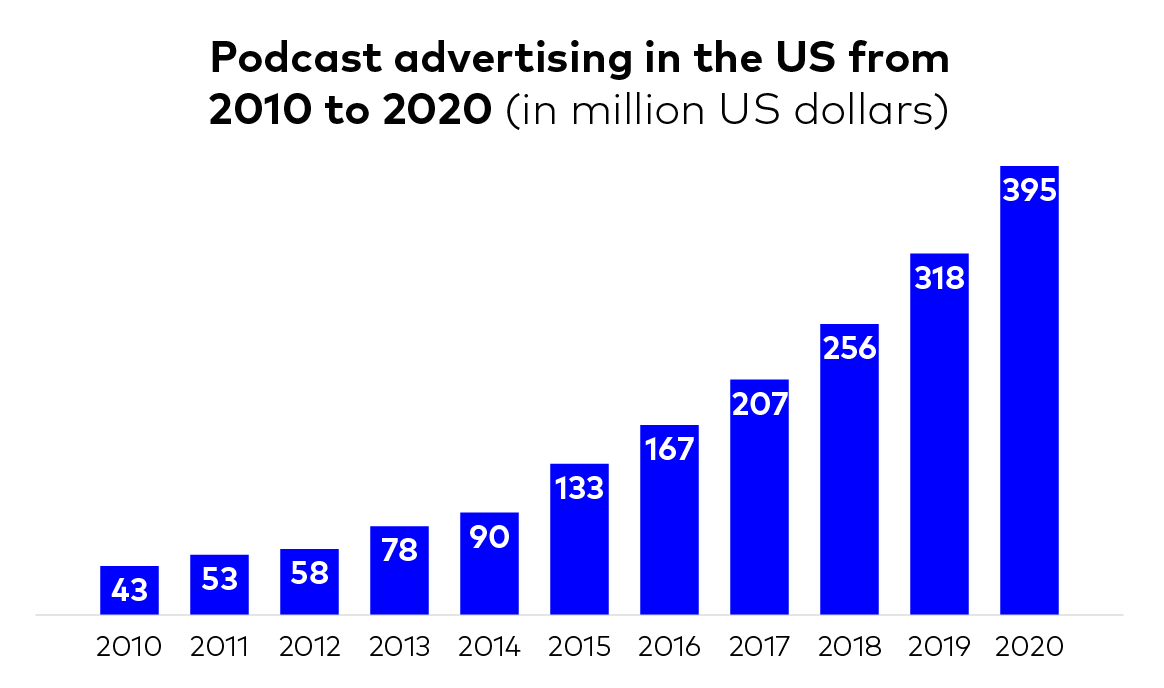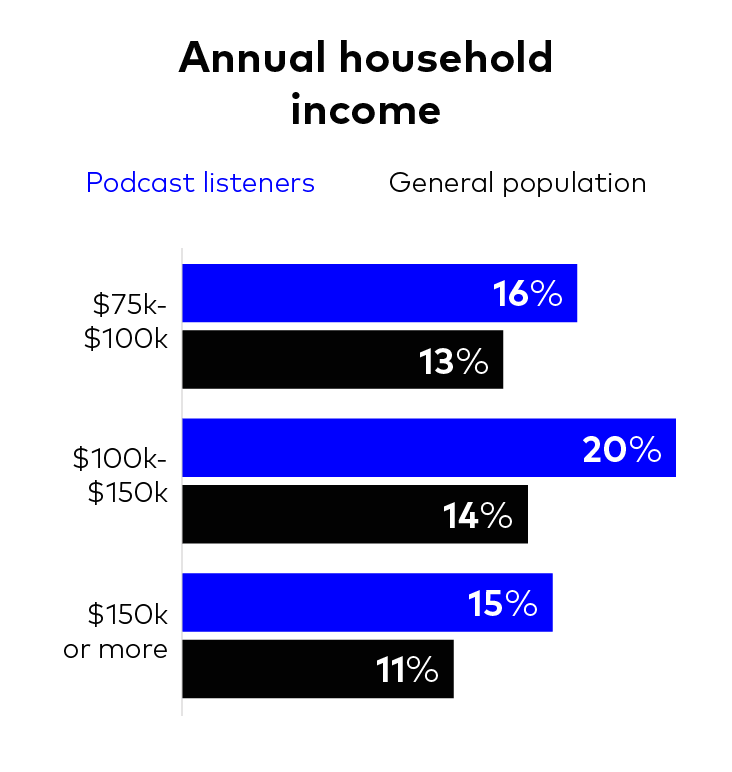 Insight Leveraging listeners: The podcast phenomena
Insight Leveraging listeners: The podcast phenomena
The landscape of listening is changing. As podcasts grow in popularity, there’s a unique opportunity for marketers to speak to a genuinely engaged audience. Here’s why it’s essential to recognise the potential of podcasts and to adopt a smart approach to your marketing.
I attended a CMA Digital Breakfast on podcasting a few months ago that stuck with me. Three speakers shared fascinating insights, and some exciting stats, that have been difficult to forget:
- 15-20% of people are listening to podcasts at least once a week.
- Ad revenue in the US from podcasting is projected to exceed $300 million in 2019

As one of the world’s leading listening platforms, Spotify is taking full advantage. Its much-loved UK rap and grime playlist Who We Be has recently launched a companion podcast series, and the music streaming service has cut an impressive $1 million deal with Amy Schumer for a weekly show. In February this year, they even shelled out $340 million to acquire Gimlet and Anchor, two of the world’s biggest podcast production houses.
But the podcast phenomena doesn’t end there. Both big and small screens are creating adaptations not just from books, comics and video games, but also from podcasts. Amazon’s original series Homecoming, starring Julia Roberts, is based on a popular podcast series of the same name.
Needless to say, podcasts are one of the fastest growing mediums in media; they’re the next big thing. And there’s a mad scramble to dip a toe in the water, be it as creator, marketer or listener.
Why are podcasts so popular today?
With our daily lives dominated by taps, swipes and scrolls, audio content is a rare instance of hands-free engagement. Initially, I only listened to podcasts while getting manicures. But slowly I found myself doing it while washing the dishes; getting ready for work; commuting. I’m passively educated and entertained whenever the mood strikes, enjoying what feels like an incredibly personal escape amidst a world of always-on multitasking and chatter.
The marketing opportunity
It’s widely said that we live in an ‘attention economy’, so of course, the marketing potential for podcasts is huge. One of the major benefits being just how engaging and absorbing the medium is; as marketers, we’re talking to an audience that is actually listening. And audiences are diverse.
While there is no typical listener, there are noticeable trends.

In terms of age, 49% of listeners in the UK are under 35 but there are growth trends for both younger and older audiences. “Affluent, educated and self-selecting” is how the listener base was described by one of the speakers at the CMA Digital Breakfast. This is unsurprising. The early days of podcasting were dominated by ‘talking heads’ style content, where people discussed news, current affairs and educational topics.
Building on this, 83% of those who listen to podcasts in the US earn above the national average, which is probably news enough to tempt advertisers of all shapes and sizes.
But how do we speak to this audience and what’s most effective when conveying brand messaging? There are several methods to leverage podcasts:
- Branded content is the hardest to pull off but brings the greatest returns if done right. All types of brands have their own pods, from The Economist to Love Island.
- The 30-second host read or sponsorship is similar to traditional ad spots, whereby the content creator will simply read out (or improvise on) a scripted advert.
- Dynamic insert ads are an alternative to ‘baked in’ ads where you can insert an ad in a show for a set period of time and chose to broadcast to a particular group. You can even insert a dynamic ad into older evergreen content.
Understanding the formats you can use for marketing in podcasts is straightforward. What needs to be thought about more deeply is how to get it right. So, how do you avoid simply producing a repackaged radio ad?
Authenticity
Specificity and authenticity are undoubtedly a big part of why podcasts appeal. Gone are the days of early media, when there were just a handful of TV channels, radio stations and magazines to choose from. Today, the market is saturated and audiences are overwhelmed with choice.
However, the podcast format has facilitated the creation of programmes with very specific niches and topics. There truly is something for everyone; and if you can’t find a show on what you love, you can easily create your own.
It gives all manner of communities, interest groups and demographics a platform. Scrolling through my podcast app is like a mood board of my different identities and interests. My introduction into the podcast world, Mostly Lit, is a literature and culture show from a millennial, black British perspective. This sits side by side with Lexicon Valley, a nerdy deep dive into etymology and Forever 35 – a podcast about womanhood, skincare and life.
Plugging into a podcast can be an intensely personal experience. For the casual creator, delivering a truly authentic content experience can be relatively easy, especially if you’re talking to people just like yourself. But creating content that resonates as a marketer can be more difficult. Effectively leveraging existing podcast reputation and addressing dedicated audiences takes a certain amount of research, data gathering and understanding. There is a relationship between podcasts, authenticity and data.
Deep learning: data and research
For most brands, the key to success in this space won’t be through a mass broadcast approach. Podcasts appeal to their audiences because of how directly they speak to their listeners, fitting seamlessly into their busy lives. And there’s no boilerplate audience.
The most effective utilisation of podcasts, or podcast ads, requires a deep dive into audience and listenership data, building highly detailed personas and crafting a great final product that speaks to them on an individual level. Land Rover’s The Discovery Adventures podcast is a great example. The podcast is a family-friendly show that’s listened to on car rides is the perfect length to capture children’s attention span.
To achieve this, you need depth and breadth of understanding around their interests, day-to-day routines, influencers relevant to them, their culture, drivers and the role the podcast will play in their lives in general. Use social listening, surveys, audience interviews, reports and any other data you can get your hands on. This is a step that is all-too-often skipped but dramatically impacts marketing effectiveness.
So, before rushing into the wonderful world of podcast marketing, make sure you:
- Use data and research to understand exactly who you are talking to for an effective content strategy
- Understand what resonates with your target market.
- Say something relevant and befitting of your podcast of choice.
- Choose the right marketing method.
- Consider how to measure the effectiveness of your campaign.
If you consider these core marketing principles, you’ll find listeners not only engaging with the podcast, but also with your brand. And, in today’s noisy advertising landscape, it may just be the best way to do it.
